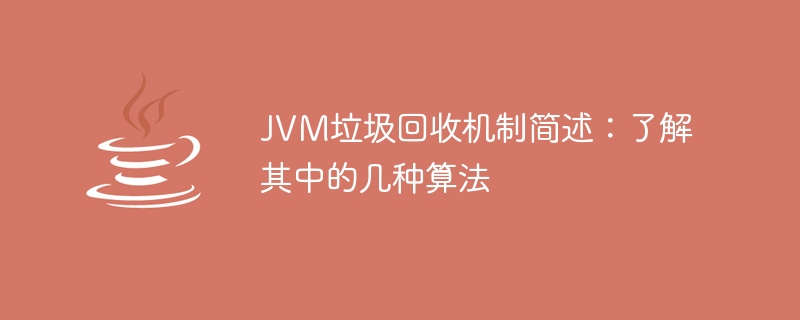

A brief introduction to the JVM garbage collection mechanism: To understand several of the algorithms, specific code examples are required
With the continuous advancement of software development and the increase in the complexity of applications , memory management has become an important issue. Traditional manual memory management can easily cause problems such as memory leaks and wild pointers. In order to solve these problems, the Java Virtual Machine (JVM) introduces an automatic memory management mechanism, the core of which is the garbage collection (Garbage Collection, GC) mechanism.
Garbage collection refers to automatically releasing the memory space occupied by useless objects during the running of the program. When an object is no longer referenced, it can be garbage collected. The JVM's garbage collection mechanism can automatically detect and recycle these garbage objects to improve memory utilization efficiency.
The garbage collection mechanism of JVM mainly includes the following aspects:
It should be noted that garbage collection is not an immediate operation, but a periodic operation. The JVM will dynamically perform garbage collection operations based on the current memory usage and garbage collection algorithm selection.
Let’s use code to briefly illustrate the above three algorithms:
public class GarbageCollectionDemo {
public static void main(String[] args) {
// 标记-清除算法示例
List<Integer> list1 = new ArrayList<>();
for (int i = 0; i < 10000; i++) {
list1.add(i);
}
list1 = null; // 清除引用,触发垃圾回收
// 复制算法示例
List<Integer> list2 = new ArrayList<>();
for (int i = 0; i < 10000; i++) {
list2.add(i);
}
// 标记-压缩算法示例
List<Integer> list3 = new ArrayList<>();
for (int i = 0; i < 10000; i++) {
list3.add(i);
}
list3 = null; // 清除引用,触发垃圾回收
}
}The above code briefly illustrates the mark-clear algorithm, copy algorithm and mark-compression algorithm. In the example, we create three ArrayList objects and clear the references of two of them at the appropriate time, thereby triggering the garbage collection operation.
In short, the JVM's garbage collection mechanism can greatly simplify the work of memory management by automatically releasing the memory space occupied by useless objects. After understanding several of these algorithms, we can better understand the principles and operation process of the garbage collection mechanism, and rationally utilize the garbage collection mechanism in actual software development to improve the performance and stability of the program.
The above is the detailed content of Understand the JVM garbage collection mechanism: explore several recycling algorithms. For more information, please follow other related articles on the PHP Chinese website!




